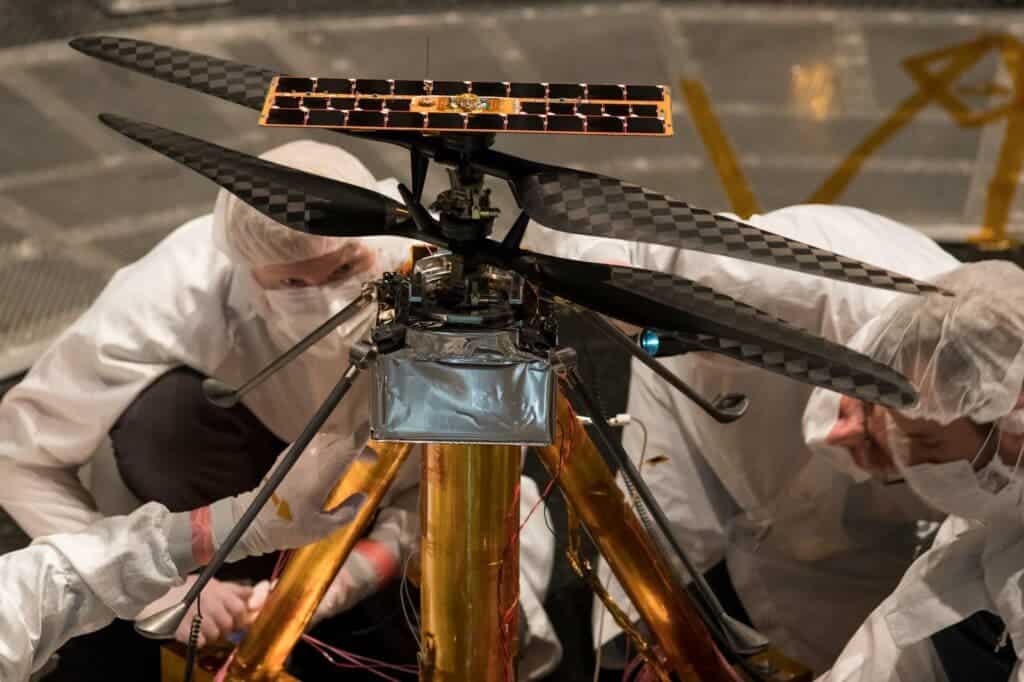Did you ever dare to dream of the day you’d see a helicopter in space? Well, rest easy, your watch has come to an end — NASA’s Ingenuity, the “Mars Helicopter”, is one month away from touching down on the red planet.

Ingenuity is currently onboard NASA’s Perseverance rover, the US’ latest Mars-bound rover. It’s the first American mission to Mars since 2018’s InSight, but it was only one of three missions sent out to Mars in 2020 alongside the UAE’s Hope orbiter and China’s Tianwen-1 orbiter, lander, and rover.
While all of them are very exciting, Ingenuity will be the first helicopter to actually be sent to space, ever. NASA is expecting it to touch down on Mars on February 18.
Flying on new horizons
“NASA’s Ingenuity Mars Helicopter is the first aircraft humanity has sent to another planet to attempt powered, controlled flight,” NASA explains in a press kit. “If its experimental flight test program succeeds, the data returned could benefit future explorations of the Red Planet – including those by astronauts – by adding the aerial dimension, which is not available today.”
The helicopter is pretty small, similar to a medium-large commercial drone, and comes equipped with two carbon-fiber rotors. These will spin at around 2,400 rpm in different directions so as to stabilize the craft in flight. That speed of rotation is many times faster than those used by passenger helicopters on Earth, due to their smaller size and Mars‘ thinner atmosphere both. Since the air is thinner there, rotors have to put in a lot of extra work to generate the same lift they would produce on our planet.
If all goes well, Ingenuity could completely change how we explore Mars, and other planets with atmospheres. Up to now we’ve been using rovers, which have quite a few benefits (ground vehicles have great energy efficiency since they don’t need to stay aloft, and weight is much less of an issue, for example). However, they’re also much slower than any other vehicles in general, as they have to contend with terrain features. If Ingenuity manages to do its job, and do it well — and, especially, if it can withstand Mars’ harsh environment — space helicopters will definitely become much more common in the future.
But until then, Perseverance still needs to reach its target, and Ingenuity still needs to prove it can fly on Mars. Fingers crossed.


